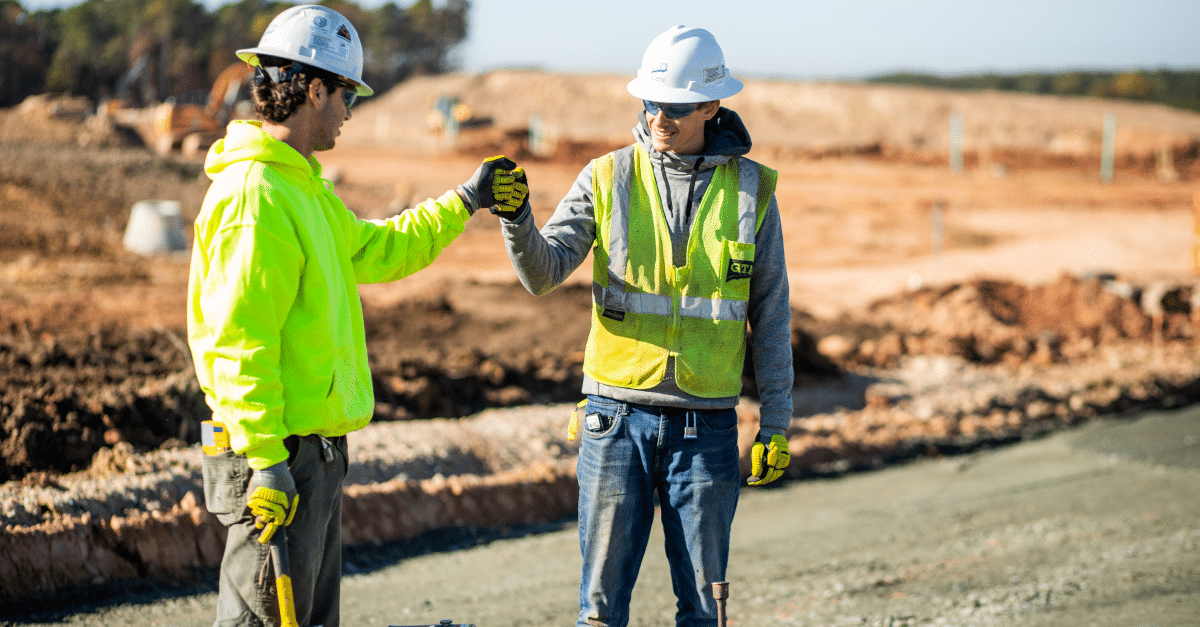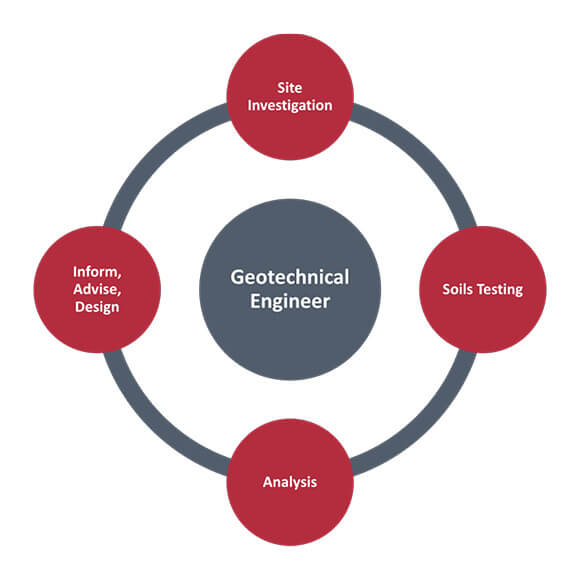Geotechnical Engineering For Construction Projects Can Be Fun For Anyone
Geotechnical Engineering For Construction Projects - Truths
Table of ContentsThe 10-Minute Rule for Geotechnical Engineering For Construction ProjectsNot known Factual Statements About Geotechnical Engineering For Construction Projects Top Guidelines Of Geotechnical Engineering For Construction ProjectsThe Facts About Geotechnical Engineering For Construction Projects RevealedGeotechnical Engineering For Construction Projects Things To Know Before You Buy7 Easy Facts About Geotechnical Engineering For Construction Projects ExplainedFascination About Geotechnical Engineering For Construction ProjectsThe Main Principles Of Geotechnical Engineering For Construction Projects
Coinciding with this raised complexity comes geological and environmental factors that affect the style of the structure, which is arguably the most integral part of any kind of growth. People need to trust that buildings, bridges, and roads will stand the test of time. A Geotechnical designer recommends on just how a framework can best be supported giving its distinct scenarios What's concealed below the surface of the ground is likely the most essential item of details that a Geotechnical Engineer is after.These examples are after that examined by the laboratory to figure out soil structure (Geotechnical Engineering for Construction Projects). The failure of sand, silt, clay, and various other products present in the dirt, assists the designer identify what special qualities the website has and what the ramifications of those might be. Naturally soil structure is just one test that can be performed on examples
Get This Report about Geotechnical Engineering For Construction Projects
Based on these tests, there might be a lot more dirt borings that are drilled, or the engineer may have adequate information from the initial examinations to make a recommendation to the client on how best to continue with their task. Results are typically reported with borings logs which reveal the dirt composition and qualities at a range of midsts.
Geotechnical engineers are liable for comprehending the buildings of natural deposits and using this knowledge to create safe, cost-effective designs for building jobs. It is a crucial part of any type of civil design job, as it is made use of to identify the suitability of a site for building and construction and to make sure the framework's security.
This consists of executing laboratory examinations on the examples and making use of geophysical approaches such as seismic refraction and electrical resistivity surveys. This data is used to evaluate the site's viability for construction and to establish the type of structure that need to be used. Geotechnical design examines dirt problems, recognizes prospective hazards, selects a suitable structure system for the proposed framework, and figures out the ideal foundation design for a provided task.
Things about Geotechnical Engineering For Construction Projects
The framework may become unsteady or collapse without proper soil stabilisation, causing pricey fixings and possible injury. The stabilization procedure includes making use of numerous strategies to improve the security of the soil, such as compaction, grouting, and the enhancement of strengthening materials. Without soil stabilization, the risks related to construction projects would be a lot greater, and the results a lot less trusted.
It is a process made use of to improve the residential or commercial properties of dirts. Geotechnical engineers conduct site examinations to examine the dirt's properties and identify prospective dangers. They also design foundations and various other frameworks that need to be improved the site, taking into consideration the soil's attributes. They create and carry out soil stablizing strategies, such as including concrete, lime, or various other supporting representatives, to boost the dirt's toughness and stability.
Getting My Geotechnical Engineering For Construction Projects To Work
Geotechnical engineers are essential in helping to make sure that soil stablizing is done appropriately to make sure that the framework is safe and protected. Geotechnical design is also used to evaluate soil problems and recognize possible hazards. This consists of analyzing potential flooding, landslides, and other natural calamities that might influence the foundation.
Geotechnical designers use this understanding to execute site examinations, dirt, and rock testing, and to translate the outcomes to figure out the ideal style parameters for a project. This info is used to guarantee that the structure, preserving wall surfaces, slopes, and other frameworks constructed on or within the subsurface products have enough stability and resistance to outside loads, such as quakes, wind, and water.
These structures call for a deep understanding of the behavior of the subsurface products, as well as the capability to take care of the impact of excavation and construction on the surrounding setting. Geotechnical designers utilize their proficiency to figure out the proper design criteria for these frameworks, such as the dimension and form of the tunnel, the stamina of the sustaining rock, and the kind and quantity of assistance needed.
In addition to the layout and building of frameworks, geotechnical engineering likewise plays an essential role in the rehab and maintenance of existing structures. As structures age, they might experience destruction or other troubles that affect their security and efficiency. Geotechnical engineers use their proficiency to analyze the condition of these structures, determine the reasons for the troubles, and develop methods to address them.
4 Easy Facts About Geotechnical Engineering For Construction Projects Explained
In this short article, I will go over the function of geotechnical design and the kinds of issues geotechnical designers fix. Geotechnical designers (geotechs) are associated with nearly every kind of civil design project. Besides, every framework is sustained by dirt or rock unless it is floating, flying, or dropping.
Geotechs are normally most included at the start of a project. Geotechnical Engineering for Construction Projects. Some of the jobs that a geotech might be accountable for are checking out subsurface conditions, establishing needed laboratory screening of dirt and rock, interpreting the subsurface exploration outcomes, useful site and composing reports that document the website problems and provide referrals for structures, fill specs, incline security, etc
It is not uncommon for geotechnical designers to concentrate on just one of the locations listed above and research that subject their entire profession. Geotechnical design is an essential aspect of any type of civil engineering project. No matter how terrific a structure is constructed, it will not be excellent for long if the foundation is insufficient.
Facts About Geotechnical Engineering For Construction Projects Uncovered

Frequently, points that might not seem essential become crucial years later when issues arise. One last point to bear in mind: geotechnical design is married to geology. Despite how terrific your design competence is, if something important is missed in the geologic characterization at a website, your know-how our website might not save you.
He enjoys crawling about on any type of landslide he can locate and investing time fly fishing on the water. I wish you enjoyed this week's message by guest author Jese Vance. I hope you'll join us.
The Facts About Geotechnical Engineering For Construction Projects Uncovered

It is essential to recognize the dirt condition before creating the click to find out more kind and deepness of foundation required for the structure. In order to recognize the subsurface dirt problem, a geotechnical investigation is needed.
Geotechnical Engineering For Construction Projects - An Overview
When the test results come, the Geotechnical Designer analyses the record, which details the soil and rock residential properties groundwater problem and the connected threats. The kind of structure called for to develop the framework is then figured out. Based upon the referral of the Geotechnical Designer, the architectural designer after that designs the framework.